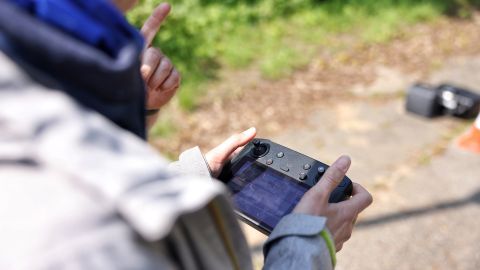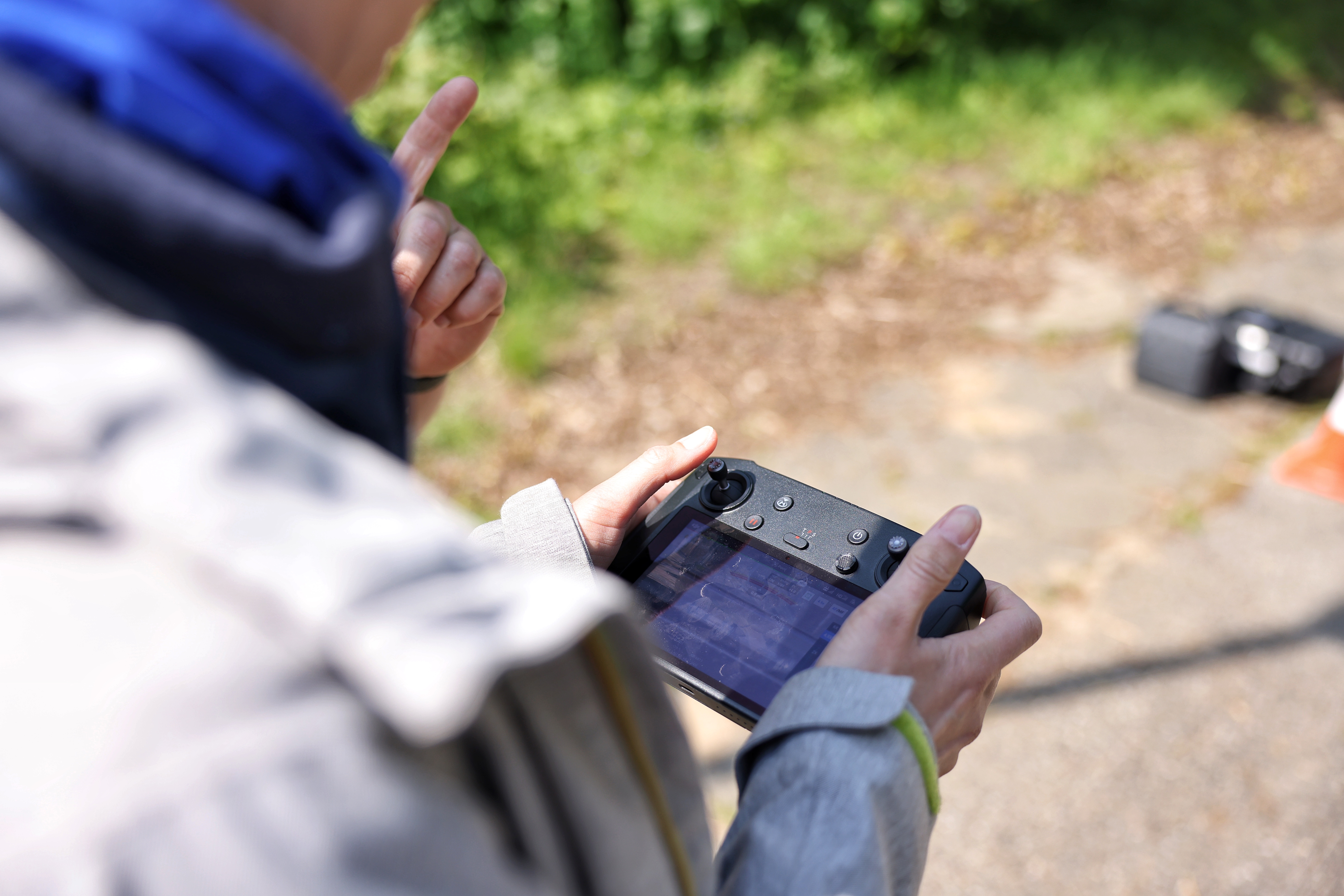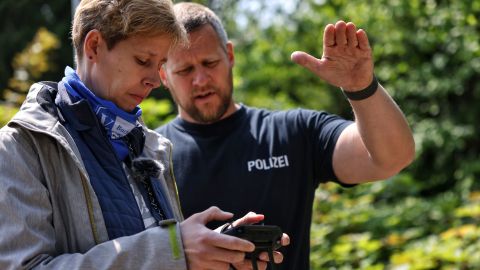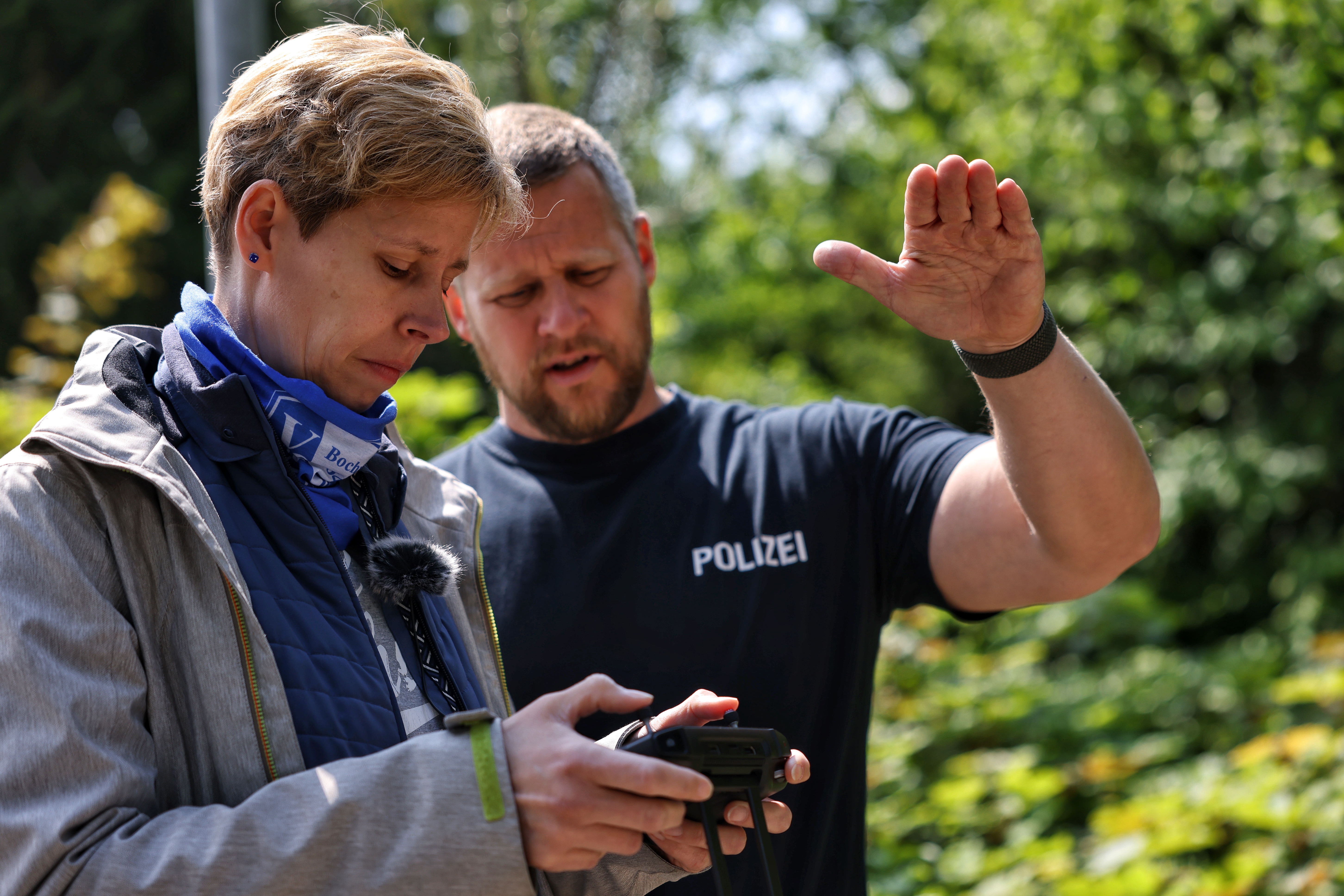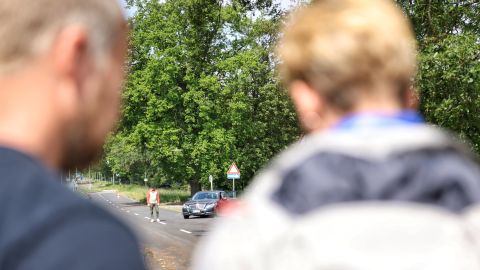The wind has picked up slightly and the sun keeps disappearing behind the clouds. Daniela Stiens has to keep an eye on both. Four days earlier, she had never held a drone in her hand, let alone controlled one. Now the 45-year-old is maneuvering the aircraft in the direction of a vehicle around 100 meters away.
She skillfully stops just before the hood and takes aim at the suspect thanks to the flying camera. The image on the screen of her remote control is still a little blurry. "Watch the zoom, try to avoid the dark reflection on the windshield," advises Jürgen Keuter (47). Following the drone instructor's tips, the image on the smart controller promptly improves.
High demands on remote pilots
Like the chief inspector, who works at the forensic investigation department in Bochum, around 230 police officers and government employees from across NRW have already been trained as "remote pilots for drones" at the Rheindahlen training center near Mönchengladbach over the past two and a half years.
"Drones are important for tracking criminals, recording traffic accidents or searching for missing persons, among other things," emphasizes NRW Minister of the Interior Herbert Reul. "However, flying them requires training, as the quality demands placed on remote pilots, for example in crime scene investigation, riot police or traffic accident investigation teams, are high."
In the NRW police force, drones are always flown by two people. The duo consists of the pilot and an "airspace observer". As the roles always change, both must of course complete the training.
More than 40 training courses per year for the small and large drone
The police officers and government employees who complete their drone training in Mönchengladbach come from a total of four different organizational units: Forensic Investigation, Riot Police, Traffic Accident Investigation and the Crime Scene Surveying and Visualization specialist rate of the LKA NRW.
More than 40 training courses are held each year, which are divided into basic courses (small drone) and advanced courses (large drone). Four full-time instructors and around 20 part-time instructors are on duty. The demand is still there: the Ministry of the Interior expects 122 active drones in NRW in the future and around 450 people who can control them.
More efficiency through the use of drones
"In the basic course, we focus on sustainable flight training. In this way, we create the basic framework for the practical use of drones in the various operational situations that the police face on a daily basis," emphasizes Stephan Giesel.
The head of drone training at the State Office for Training, Further Education and Personnel Affairs (LAFP) of the NRW police is convinced that drones and the bird's eye view they provide not only make the work of officers and government employees easier.
"In the past, it often took five or six hours to record a serious traffic accident and close the road accordingly, but thanks to high-tech flying devices, this can now be done in half the time."
No prior knowledge required for training
Sabrina Boblist also had no "prior knowledge of Playstation" before the LKA officer started her first drone training course in 2021. "It was a healthy challenge and at the same time a very varied course," recalls the head of Department 54.2, which is responsible for crime scene surveying and visualization at the NRW State Criminal Police Office, among other things.
According to the 43-year-old, the close contact with the trainers, who each accompany two drone beginners, was particularly helpful on the way to mastering the initially quite unfamiliar technology.
Boblist, who completed further training on the large drone in 2022: "Thanks to the professional exercises, it worked surprisingly quickly with yawing, rolling and so on." (Small drone lexicon: when yawing, the drone rotates around its own axis; when rolling, it moves sideways on the vertical axis).
Numerous flight training sessions in different conditions
In concrete terms, the five-day course, which ends with a final exam, consists of a theoretical and a practical part. On the afternoon of the first day, each of the eight "trainees" will have their maiden flight on the simulator with the "basic flight maneuver on visual/indoor" section after some finger exercises.
This will be followed in the coming days by flight training outside of visual range, all under difficult conditions (without technical aids such as stabilization sensors, compass, GPS etc.) and reconnaissance flights in buildings or dark garages.
Modular accessories such as spotlights or loudspeakers are also used here. All flight exercises take place in a kind of "ghost town" on the former NATO site next to the training center.
Drones in houses at risk of collapse? No longer a problem thanks to drones!
Sabrina Boblist says she learned the craft of flying during drone training. In practice, she and her colleagues at the LKA combine this expertise with the latest technology for three-dimensional documentation of crime scenes - the keyword being photogrammetry.
In the past, many photos had to be taken manually from a helicopter in order to create an overall 3D image. "Today, the drone takes care of this and allows us to operate in areas at risk of collapse, for example, where no helicopter or person can go."
Drone training is constantly evolving
The drone program has grown in many ways since its launch. "The training courses are not a static process, some of the content is different today than it was at the start of the pilot phase in 2020," says Dennis Sakowsky, specialist coordinator for drone pilot training at the Drone Competence Center, which is based at the Police Flying Squadron in Düsseldorf.
This is partly due to the feedback from graduates. Changes (i.e. technical progress) in the aircraft are also a decisive factor.
Increasing range of applications due to new technology
"At the beginning, training in large drones was still carried out on the Matrice M210 model, for example. We now use the M300," explains Head of Training Stephan Giesel. "It not only has twice the battery life. It also offers a thermal camera, which opens up new application possibilities that naturally need to be trained."
Back to Daniela Stiens. The officer now has a good view of the driver. Using the loudspeaker function on the drone, she asks him to leave the car slowly. At first, the suspect follows her instructions. Then he takes to his heels. Daniela Stiens takes up the chase, easily operating the controls, her drone gains height and speed. Daniela Stiens has everything in view, the fugitive has no chance.
